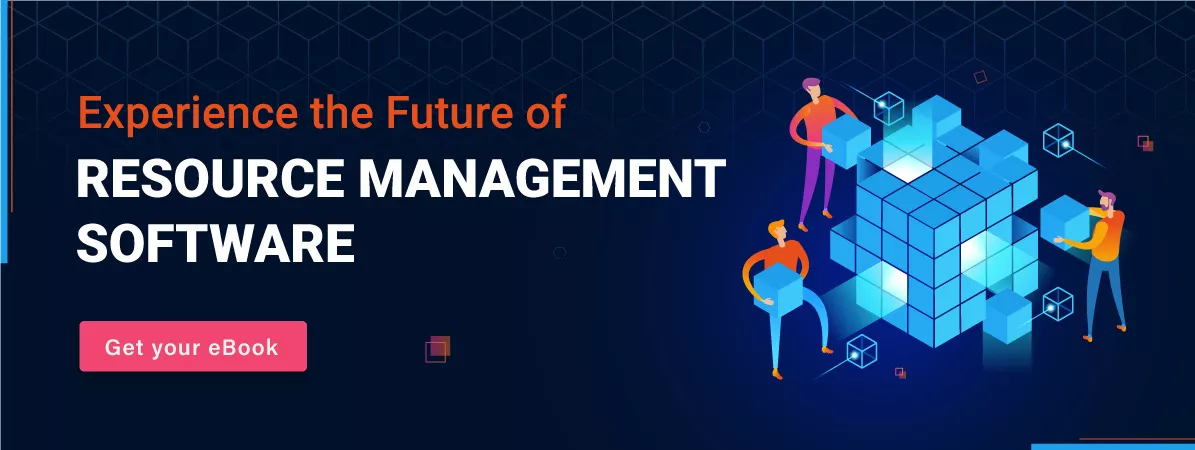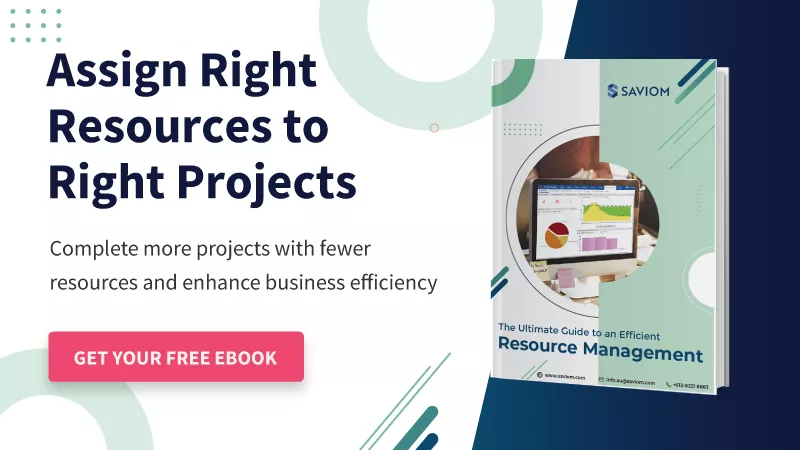According to a study, the market size of the mining industry is expected to increase by 5.4% by the end of 2022.
This stat explains the importance of this growing industry. The mining sector plays a vital role in the global market as it is expanding exponentially while generating revenue and creating other precious assets.
The mining industry is involved in extracting minerals and other geological materials such as coal, diamond, metallic ores, oil, etc.
However, the extraction of reserves is not an easy feat. Numerous challenges plague this sector, such as depletion of ore reserves, environmental issues, safety hazards, resourcing bottlenecks, etc.
Amongst these, resource-related challenges such as skills shortage, sub-optimal utilization, etc., are significant obstacles that can bring mining projects to a halt.
This blog discusses these challenges in-depth and the techniques to combat them.
First, let’s look into the mining industry and its characteristics.
How does the mining industry operate?
The mining industry extracts numerous raw materials using various modes and methods. There are four main mining methods: underground, open surface (pit), placer, and in-situ mining.
- Underground mining is conducted to get to rich deposits deep below the earth’s surface, which involves digging and creating tunnels/shafts to extract the ores and resources.
- Surface mining includes the removal of plant life, soil, and potentially bedrock to access resource deposits. It is generally used for relatively shallow, non-precious deposits.
- Placer mining is generally done in riverbeds, sands, or other sedimentary environments and involves sifting valuable materials from the sediments.
- In-situ mining involves pumping chemicals underground to dissolve resources containing the ore. Later, the resultant solution is returned to the surface and processed to recover minerals.
Furthermore, every mining project follows specific steps to ensure safe and successful completion. They are:
- Exploration phase- Here, information about the location and value of the mineral ore deposit is obtained using surveys, field studies, drilling test boreholes, and other exploratory excavations.
- Development- In this stage, roads are constructed to transport heavy equipment and machinery and transfer raw materials from the mines. In addition, the worksite is also cleared and prepared for mining.
- Active mining- Depending upon the type of mining required, they start the extraction of ores and raw materials from the earth.
- Disposal of overburden and waste rock- Ores are often located deeper in the earth; thus, large amounts of rock and soil are extracted. These waste rocks and other materials are disposed of in this stage.
- Ore extraction- After a mining company has removed the overburden, mineral ore extraction begins using specialized heavy equipment and machinery. This is then transported to processing facilities.
- Beneficiation- This is the process of separating relatively small quantities of metal from the non-metallic material of the ore.
- Tailings disposal- The beneficiation process generates high-volume waste called ‘tailings,’ which contains toxic substances; these materials are disposed of in this step.
- Site reclamation and closure- When active mining ceases, mine facilities and the site are reclaimed and closed by changing the site to a state that most resembles the pre-mining condition.
Now let’s look at various crucial roles in the mining industry.
Major roles in the mining industry
- Mining geologists are responsible for mapping out the locations of valuable minerals. They work in all aspects of the mining industry and assist in minimizing the impact of mining on the local environment and habitat.
- Mining Engineers- They supervise the construction of mines and formulate safe methods of extracting minerals from the earth.
- Metallurgists- They are mineral experts who oversee, develop and test processes used in metal extraction and the alloying and casting of materials to produce commercial metal products.
- Mine managers- They are certified or experienced people in charge of mine’s operations and supervision of personnel.
- Miner- A miner is a person who extracts ore, coal, chalk, clay, or other minerals from the earth through mining.
These are some of the significant roles and characteristics of the mining industry. Now let’s look at the resourcing challenges that affect this industry.
Major resourcing challenges affecting the mining industry
The mining sector utilizes a large number of resources to fulfill project activities. However, this also brings forth numerous bottlenecks. Below are some significant resourcing challenges in the mining sector.
Shortage of skilled mining resources
The shortage of technically skilled labor, such as mining geologists, engineers, etc., is one of the most pressing concerns in the mining industry. The primary reasons are the aging workforce close to retirement and the decrease in graduates specializing in mining engineering and science.
In addition, the existing generational gap between the employees makes collaboration challenging; thus, there is no seamless exchange of knowledge. The experienced workers have deep industry knowledge, but they are less comfortable with digital innovations. On the other hand, new workers have a strong understanding of technologies but may have thin expertise in mechanical-physical operations. Due to limited or no exchange of information, the skills gap is widening, putting extra pressure on the existing employees, leading to burnout and low productivity.
Inability to allocate cost-effective global resources
When the existing mines deplete, mining firms need to identify new reserves. However, these reserves might be in remote areas or different states or countries. Mining companies might have to hire expensive local resources if existing employees refuse to relocate.
This escalates resourcing costs, leading to budget overruns and lower profit margins in mining projects. Recruiting high-cost mining personnel is also subject to the lack of visibility into the resources and their attributes, such as skills, cost rate, etc. It makes the allocation of cost-effective employees challenging.
Read More: What is Resource Allocation? A Comprehensive Guide for Project Success
Ineffective equipment scheduling
The mining sector needs large-scale machinery, vehicles, and equipment to extract minerals effectively. However, when equipment is required simultaneously for different departments, a lack of visibility into its allocation can lead to double bookings and disrupt mining activities.
On the other hand, a supply shortage or unavailability of equipment at the last-minute delays task completion, resulting in project halts and failure. Furthermore, the absence of a solid system to track and stay updated on service and maintenance dates can deteriorate the equipment’s health.
Sub-optimal utilization of the mining workforce
According to a survey, more than 79 percent of respondents said not having enough work is more stressful than having too much work.
Sometimes, mine managers might double/overbook or under-allocate mining resources due to silos of data and a lack of real-time insights into their workload and allocations. Overallocation or double booking will lead to stress and employee burnout, whereas under-allocation will leave the employees disengaged and unproductive. Overall, sub-optimal utilization of the mining employees can lead to employee dissatisfaction and higher attrition.
Read More: Signs of Resource Underutilization and (how to) Course Correct Them
Lack of real-time data for timely decision making
A mining project lasts a few years and has a lot of interdependencies that require collaboration between various departments. Keeping track of every activity becomes difficult since multiple steps of mining are completed simultaneously in a quarry.
The lack of reports which provide real-time data to track the project’s progress affects the timely decision making. For example, the absence of real-time resource data makes it challenging to identify which employees are released from ongoing projects or what are the suitable vacancies, resulting in prolonged bench time.
The following section will explain how organizations can mitigate these resourcing challenges.
How does resource management software benefit the mining industry?
Robust resource management software can help mining organizations overcome resourcing bottlenecks. Below are some points discussing the same.
Helps forecast & plan pipeline mining project demands
Most resource challenges like resource shortage, incompetent allocation, sub-optimal utilization, etc., can be resolved if pipeline mining projects are planned well in advance. Foresight into pipeline project demand will help mine managers fulfill resource requirements at ease.
Based on this data, they can identify if there is a shortage/excess of resources. Then, they can proactively implement suitable resourcing treatments like hiring a permanent or contingent workforce, etc., to mitigate resource shortage and ensure resource availability. In case of excess resources, mine managers can negotiate with project managers to bring forward another project and avoid under-usage.
Enables competent allocation & scheduling of mining resources
Implementing resource management software provides unmatched visibility into enterprise-wide mining resources and major attributes like availability, skills, location, cost, etc. Using this centralized view and advanced filters, managers can identify the best-fit resources and allocate them. Additionally, it will enable the scheduling of cost-effective global resources for remote mining projects.
After understanding the availability of competent resources, project managers can schedule them for suitable tasks. This allows optimal resource usage and prevents under/overutilization, thus ensuring successful project delivery.
Read More: How to Perfect Resource Scheduling Techniques within Project Planning?
Helps maximize productive utilization of mining workforce
The sub-optimal utilization of resources is one of the significant resourcing challenges of the mining industry. The forecasting solution helps mine managers foresee the resource utilization and make suitable decisions to maximize productivity. The utilization reports give a clear picture of employee productivity.
For example, suppose some miners work majorly on non-billable or BAU activities such as making mining reports. In that case, mine managers can mobilize them to billable or profitable work, enabling them to use their skills in revenue-generating work. If some employees are overutilized, mine managers can implement corrective measures like adding similar-skilled resources or adjusting the project timeline to ease the workload.
Facilitates training programs to impart the latest industrial knowledge
The lack of technically skilled labor is another resource constraint that plagues the mining sector. Since the tool provides visibility into the skills and competencies of employees, mine managers can develop appropriate training and upskilling programs. It allows employees to diversify their skill sets, and explore their true potential, thus developing their career trajectory.
Moreover, the accurate capacity vs. demand gap report and overview of future skill requirements will allow managers to provide the proper training to bridge the gap. Furthermore, based on current trends in the mining sector, managers can impart knowledge on the latest technologies and innovations used in this sector, thus futureproofing the workforce.
Read More: How Can Retraining/Upskilling Future-Proof Your Workforce?
Facilitates effective equipment management
As mentioned earlier, the mining industry is highly dependent on equipment like trucks, bulldozers, machinery, etc. Manual equipment management can be chaotic, especially when multiple teams require the same machinery. So, using resource management, mine managers can get complete visibility of the equipment and their bookings.
Further, it helps mine managers to identify the right equipment, keep track of running costs, and ensure the demand for equipment on different projects is appropriately managed. Using the equipment scheduling tool, managers can also provide the timely maintenance of machinery, preventing safety hazards from using substandard machines in a mine.
Allows understanding of project feasibility with asset management
As more raw materials are extracted from mines to meet rising demands, managing assets like equipment, technology, and the workforce are crucial in increasing productivity and profitability. In addition, the knowledge gained from projects is another main asset.
The historical data and lesson learned reports from previous similar projects enable an organization to gain insights into the project’s challenges and successes. It helps to understand the previous mistakes and gaps in the project plan. That way, managers can set a clear path to make more accurate estimations for future projects. It also allows them to determine whether new mining projects are feasible to execute or profitable.
Conclusion
The mining industry is one of the most time-consuming, labor-intensive, and expensive fields globally. Therefore, managing their most expensive asset, the resources, is of utmost importance.
That’s because resource challenges affect the project more drastically as they influence its progression. Advanced resource management software will efficiently help eliminate these challenges, ensuring timely project delivery and business profitability.
What are the resourcing bottlenecks you encounter while managing mining projects?
The Glossary
Read More: Glossary of Resource Workforce Planning, Scheduling and Management
The SAVIOM Solution
SAVIOM is the market leader in offering the most powerful and configurable solutions for managing enterprise resources efficiently and effectively. Having more than 20 years of experience, this Australian-based MNC has a global presence in over 50 countries. It is also popular with more than 100 customers and helps them achieve their business goals. SAVIOM also has products for project portfolio management, professional service automation, and workforce planning software which can be easily customized as per business requirements.













Leave a Reply